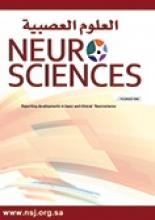Abstract
Febrile seizures occur between the age of 3 months and 5 years with a temperature of 38 degrees C or higher, and are either simple or complex. Eight gene loci have been identified to be associated with certain cases of autosomal dominant familial febrile seizures, and 12 genes have been associated with some of the familial epilepsy syndromes that can start with febrile seizures. The mutations and the protein products are known for only some of these 20 genes. The risk of recurrence of convulsions in a further febrile illness is on average 30%, and of developing epilepsy is on average 6%, but both vary depending on the presence and number of risk factors in any given patient. The immediate treatment of a febrile convulsion is intravenous or rectal diazepam, but febrile status epilepticus requires intravenous Phenobarbital and possibly other medications. Long-term antiepileptic drugs are not recommended in most patients with febrile seizures. However, exceptions should be considered on an individual basis in patients with complex febrile seizures with multiple risk factors for development of later epilepsy.
- Copyright: © Neurosciences
Neurosciences is an Open Access journal and articles published are distributed under the terms of the Creative Commons Attribution-NonCommercial License (CC BY-NC). Readers may copy, distribute, and display the work for non-commercial purposes with the proper citation of the original work.






